Discovery Dish Pre-Launch: A Lightweight Dish and Feed for L-Band Weather Satellites and Hydrogen Line Reception
For the past few years we have been working on finding the best way to help beginners get started with L-band weather satellite reception and basic radio astronomy. We have now come up with a solution that we're calling the 'Discovery Dish' - a lightweight 65 cm diameter dish and active filtered feed set.
The Discovery Dish will be crowd funded, and we currently have a pre-launch page set up on Crowd Supply. So if you are interested, please visit the pre-launch page and click on the Subscribe button for updates.
Discovery Dish is a 65-cm diameter aluminum satellite dish and active filtered feed designed for receiving GOES HRIT, GK-2A LRIT, FengYun LRIT, NOAA HRPT, Metop HRPT, Meteor M2 HRPT and other weather satellites that operate around 1.69 GHz. The dish is designed to weigh under one kilogram, and it splits into three petals, making it easier to ship worldwide. The 1.69 GHz feed contains a built-in LNA right at the feed point, as well as filtering, which means that there is almost no noise figure loss from cables or connectors.
Note that the prototype images show an early non-petalized prototype with rough laser cut wind holes. The production version will obviously be a lot neater looking!
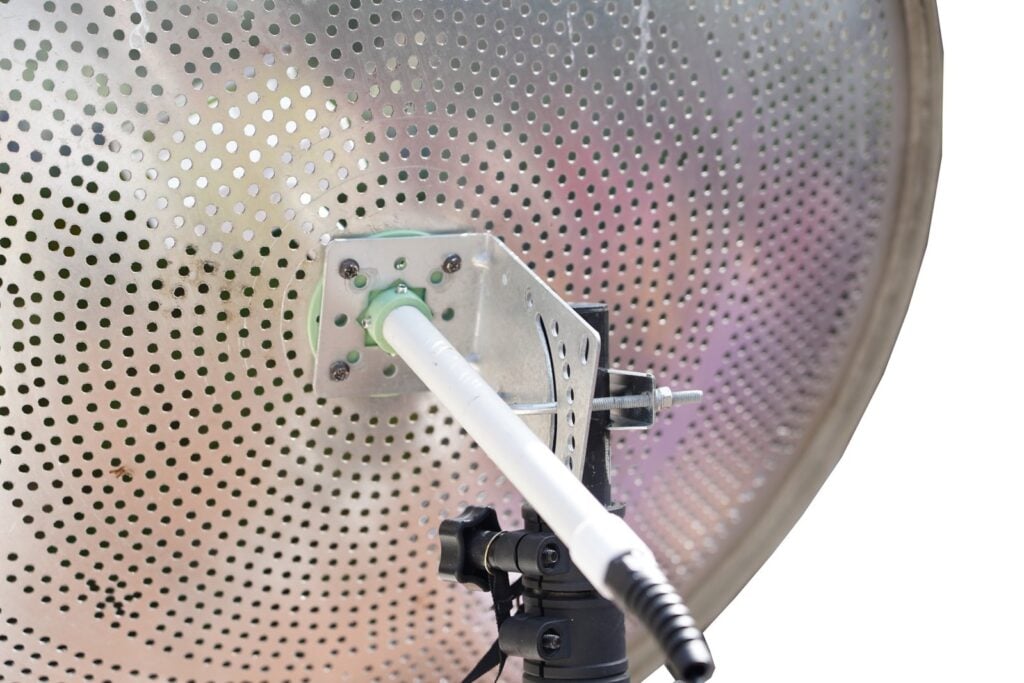
In testing the 65 cm diameter Discovery Dish with it's highly optimized feed has proven effective at receiving the GOES HRIT satellite signal with SatDump. We typically achieve SNR values of 3-4 dB to GOES-18 at 24 deg elevation, and with SatDump an SNR of 1 dB is about the minimum required to receive images so there is plenty of margin. It can also easily receive LRIT from GK-2A and Fengyun, and also when combined with an antenna rotator (or manual hand rotating) can receive HRPT weather satellites too.
The feed on the Discovery Dish consists of a tuned dipole feed with two 5V bias tee powered low noise figure LNAs, and two SAW filters (centered at 1680 MHz with 69 MHz Bandwidth). The feeds are also easily swapped out, and we will also be selling a 1.42 GHz Hydrogen Line feed for those who want to use the dish to get started with radio astronomy. Because the LNA's are right by the feed there is are no losses from feed to LNA, so we can use thinner and easier to handle cabling like RG58 without any loss issues.
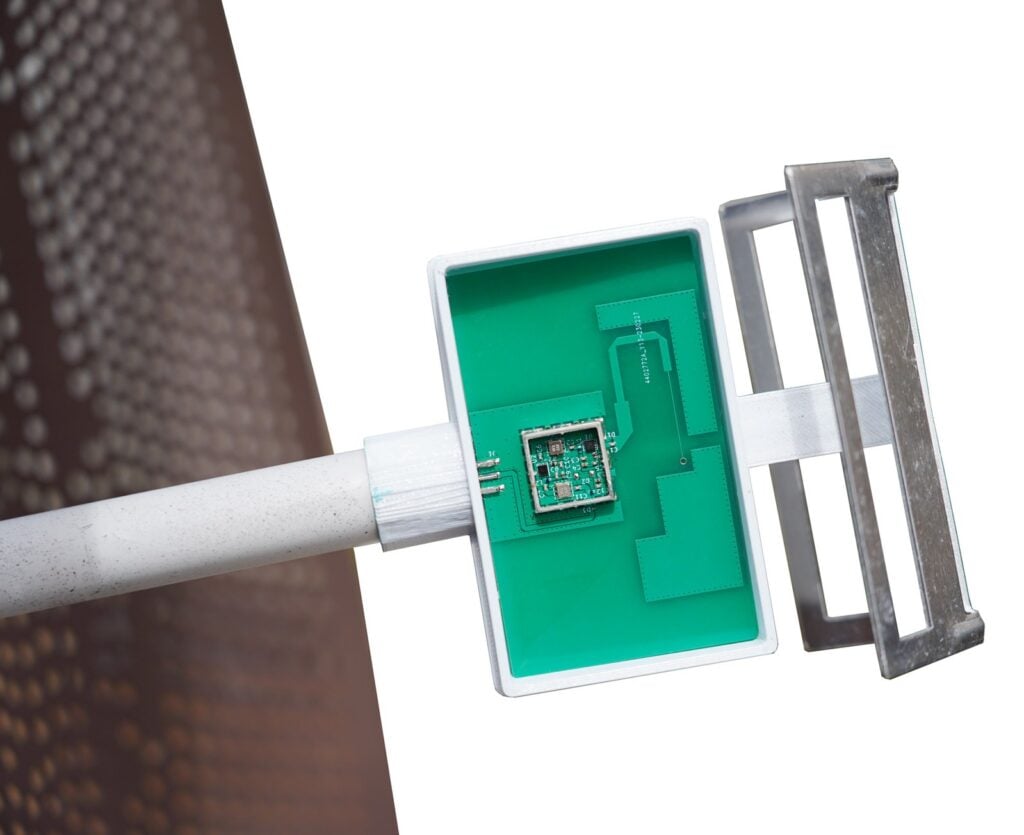
In the past we've recommended and relied on 60 x 100 cm WiFi dish antennas for L-Band geosynchronous satellites and Hydrogen Line reception, but at 1.6kg these are too heavy, wide and exert too much torque for light duty antenna rotators to handle. At about half the weight of an equivalent WiFi Dish, the Discovery Dish is much easier to handle.
In the future we hope to be able to provide a low cost light duty antenna rotator that compliments the Discovery Dish. Currently we have tested the Discovery Dish with the AntRunner antenna rotator and found it to be light enough for that rotator to handle, versus a WiFi dish which is far too heavy for it.
Also when compared to a WiFi dish, the Discovery Dish is much easier to optimally set the offset skew as you can simply rotate the feed, versus having to rotate the entire dish at 45 degree increments.
We will also be offering an outdoor electronics enclosure that can be used to house a Raspberry Pi, RTL-SDR and other components like POE splitters. In our tests we have been running an RTL-SDR Blog V4, Orange Pi 5 and POE splitter in the enclosure, and running the SatDump GUI directly on the Orange Pi 5. This results in a neat contained system where only one Ethernet cable needs to be run out to the enclosure.
As we are in pre-launch, pricing is not yet confirmed, but we expect the Discovery Dish to sell for less than US$200 with reasonable worldwide shipping costs. It will be a similar cost to what you would pay if you purchased a WiFi dish, filtered LNA and cabling yourself. Obviously please check what satellites can be seen in your region.
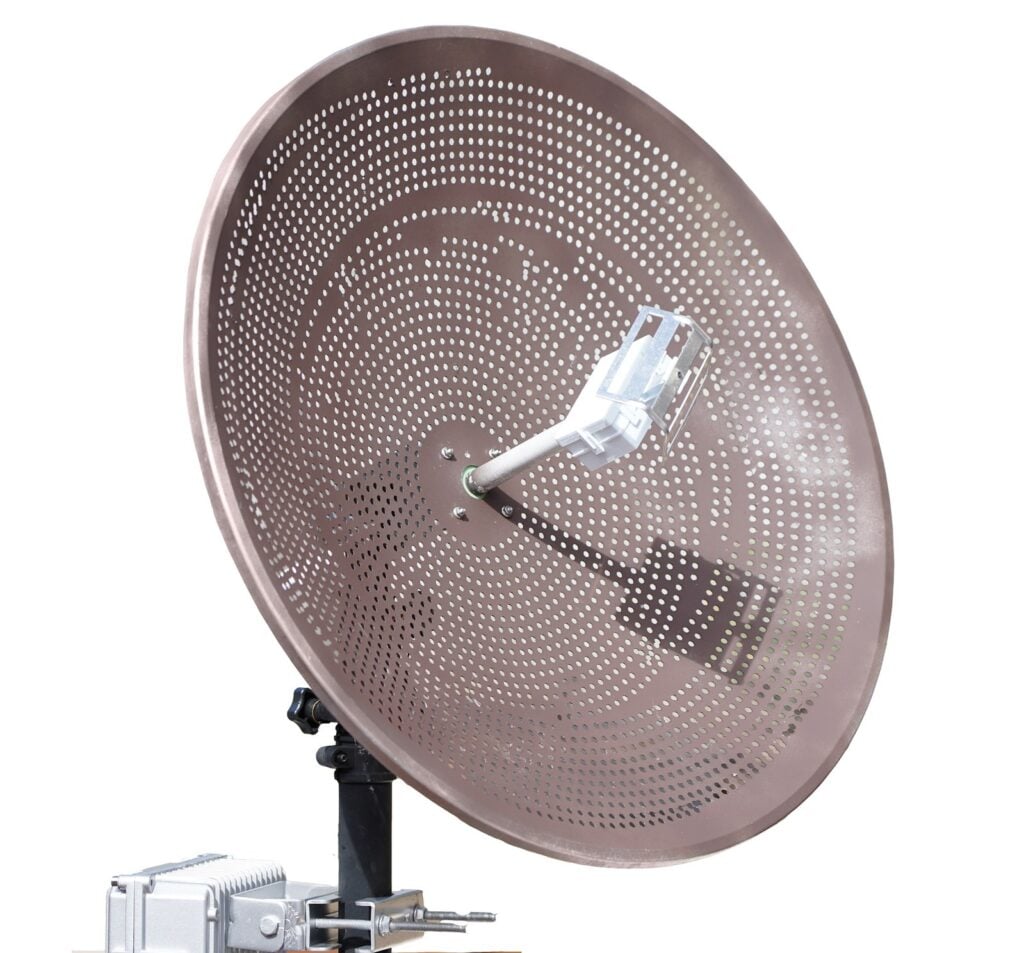
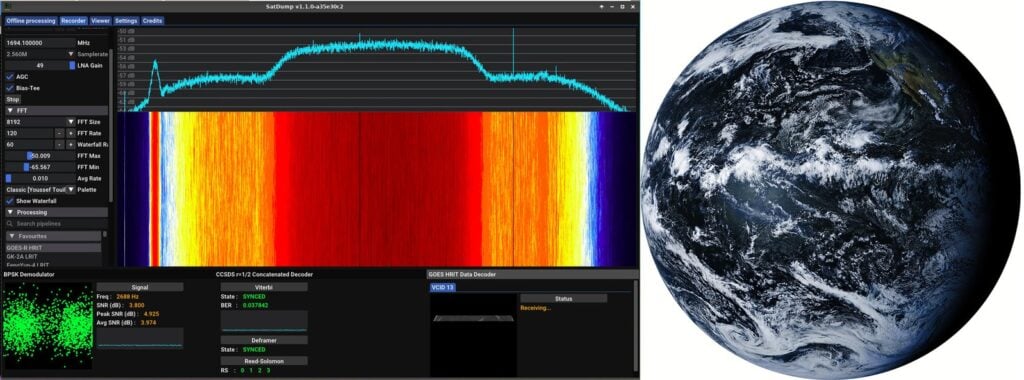

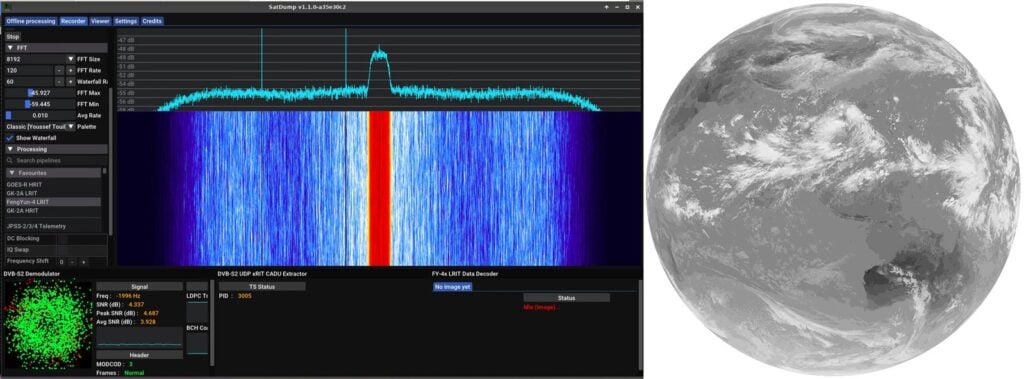
How fun!
I always think it’s fun when you come up with new products, your previous products are solid and robust so I’m looking forward to this one too. This is a great way to get started exploring satellites and radio astronomy. The price is right, you get everything you need in a kit to get started.
Really appreciate your commitment and think it’s great fun when you come up with new products to take the hobby to the next level. I wish you to endure many more years as you have done so far. 😀
I’m loving the LNA/filtering right at the feed as well as infinite rotation options for the feed. My location needs a skew right around 22.5 degrees for GOES-W…that doesn’t work out so well with my current grid antenna’s mount.
Would it be waterproof/water resistant?
Yes it is waterproof, most likely rated at IP66.
Nice project. Feed can be replaced, would be cool to develop one for 1550 Mhz Inmarsat.
Seems to be a fair amount of interest in an Inmarsat feed, we will look into it.
Count me as another +1 for Inmarsat.
As I have not tested the prototype, I cannot be sure enough to fully congratulate, but it seems an interesting idea.
I would suggest to allow the replacement of the focus part to enable RX and TX on several bands. Then it could be used with HackRF, Pluto and the other inexpensive microwave TX SDRs. So if you own a ham radio license you could easily start working microwaves.
Perhaps it could also be useful to track those unmanned deep space starships, or many other amateur microwave research. So this project is not limited to a narrow set of interests. Here in my city are some hams that could find it useful, each one for his own reason, certainly.
I would also suggest any improvement to make the dish as portable as possible. I am interested in going portable with a parabolic reflector, but I do not have a car of my own. Young people usually do not. Even more, there are places where is not possible to arrive at by car.
I hope you find my view useful, and wish you success in this interesting project.
Thanks! Yep the feed can easily be swapped out. I don’t know if we’ll have feeds that support TX, but it’s a possibility in the future.
The dish will be portable. First the feed and feed arm can easily be taken out. Secondly, with a bit of minor extra work if you want to make the dish smaller you can remove the bolts holding the three petals together.
Nice, Glad to see it’s coming together! Would love to test it out.
just what I am looking for. But I wonder about snow/ice buildup which is a problem for this area
Won’t work well if covered in snow, but I believe adding a heater or heat tape should be a fairly simple solution.
I wait for https://othernet.is/ kit
Normal linux router, good antena, solar panel .
Hasn’t Othernet’s gear been pending for years now?
Looks like the link to the crowdfunding site is broken. I want to preorder, but even searching their site, I can’t find it!
Jumped the gun a bit on this post, but the prelaunch page should be live very soon!
Also just wanted to add the preorder won’t be available just yet, it will currently just be a prelaunch page with email reminder signup. But we should be able to launch for preorder funding soon after.